News & Announcements
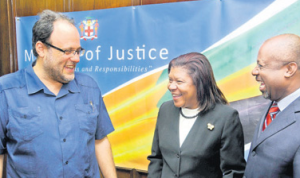 (From left) Justice Minister Mark Golding, Chief Justice Zaila McCalla, and Robert Rainford, permanent secretary in the Ministry of Justice, share a light moment prior to Thursday’s launch of Restorative Justice Week at the ministry in Kingston. (Photo: Lionel Rookwood)This week – February 5 through 11 – Jamaica once again celebrates Restorative Justice Week on the theme of "One People, One Spirit, One Justice." This is the 5th year Jamaica has hosted such a week of events related to restorative justice, and this year it coincides with Jamaica's celebration of its 50th year of independence.
(From left) Justice Minister Mark Golding, Chief Justice Zaila McCalla, and Robert Rainford, permanent secretary in the Ministry of Justice, share a light moment prior to Thursday’s launch of Restorative Justice Week at the ministry in Kingston. (Photo: Lionel Rookwood)This week – February 5 through 11 – Jamaica once again celebrates Restorative Justice Week on the theme of "One People, One Spirit, One Justice." This is the 5th year Jamaica has hosted such a week of events related to restorative justice, and this year it coincides with Jamaica's celebration of its 50th year of independence.
According to this article from the Jamaica Observer, Justice Minister Mark Golding said:
As it stands, “our justice system defines and treats crime as an offence against the State and its laws.” This definition, the minister pointed out, was geared at attributing blame and punishing the offender, not solving problems and restoring broken relationships. ...
 The Restorative Justice Council is hosting a one-day conference on March 29, 2012 in London on the topic "Making restorative practice accessible to all through meeting individual needs".
The Restorative Justice Council is hosting a one-day conference on March 29, 2012 in London on the topic "Making restorative practice accessible to all through meeting individual needs".
The conference notice states:
"Restorative practice has been shown to meet the needs of victims and reduce re-offending in criminal justice; and to improve attendance and reduce exclusions and bullying in schools. Good practice means making sure these processes are open to everyone in our communities. How do we address some of the potential barriers to participation – ensuring through good practice that restorative processes are open to all?
 Here a portion of a story yesterday by columnist Robert Koehler at the Chicago Tribune:
Here a portion of a story yesterday by columnist Robert Koehler at the Chicago Tribune:
"I found myself running down the hall all the time because of fights," Rhonda Richetta told me, speaking of her early days as principal of Baltimore's City Springs School, a K-8 school in a tough inner-city neighborhood. "I would look at kids' faces. Everyone looked angry, like they didn't want to be here -- adults and children both."
In poverty-wracked neighborhoods, this is the American school system. "Education" takes place in a context of anger, violence, intimidation and arrest. The kids are struggling not to learn but "just to survive," as Ted Wachtel, founder and director of the Bethlehem, Pa.-based International Institute for Restorative Practices, put it.
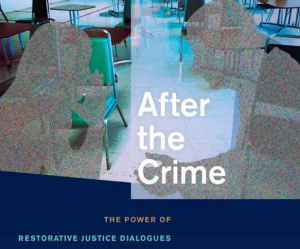 Susan Miller, professor of sociology and criminal justice at the University of Delaware, has received the Outstanding Book Award from the American Academy of Criminal Justice Sciences for her 2011 book, After the Crime: The Power of Restorative Justice Dialogues Between Victims and Violent Offenders.
Susan Miller, professor of sociology and criminal justice at the University of Delaware, has received the Outstanding Book Award from the American Academy of Criminal Justice Sciences for her 2011 book, After the Crime: The Power of Restorative Justice Dialogues Between Victims and Violent Offenders.
Martin Wright reviewed the book last summer at Restorative Justice Online writing:
"Violence, rape, murder and other abusive crimes: not usually pleasant subjects to read about, yet Susan Miller's book left this reader with a positive feeling. This is largely due to Miller herself, who presents the information in a straightforward, sympathetic but non-judgemental way ..."
Read the rest of that review here.
Find the book at Amazon.com, where you can also look inside to take a peek at some sections. It is also available directly from the publisher NYU Press in paperback.
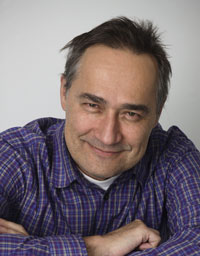 There are some interesting observations about "apology" in this guest post by Ben Furman at Coert Visser's Doing What Works: Forward in Solution-Focused Change blog.
There are some interesting observations about "apology" in this guest post by Ben Furman at Coert Visser's Doing What Works: Forward in Solution-Focused Change blog.
In the US, medical doctors have been advised for years by lawyers not apologize if patients complained about them. An apology, the lawyers used to explain, indicates admission of culpability and acts as invitation for a malpractice lawsuit. Massachusetts was the first State to adopt what is called an apology law in the mid 80s. It is a law that stipulates that an apology made by a medical practitioner to a patient may not be used against the practitioner in the court of law. Apology laws, which give legal permission for doctors to apologise to patients for their mistakes, have since been passed in most States in USA. It has been estimated that such laws have brought huge savings to the medical establishment through reducing the number of malpractice suits, increasing the number of resolved cases and decreasing the amount of moneys paid in compensation.
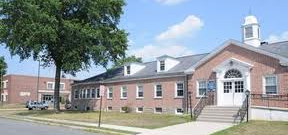 Here's news from IIRP's sister organization, Buxmont Academy, which has opened its first elementary school, which will operate with the use of restorative practices in a unique partnership with the local school district.
Here's news from IIRP's sister organization, Buxmont Academy, which has opened its first elementary school, which will operate with the use of restorative practices in a unique partnership with the local school district.
The Buxmont Academy Elementary Program at Pottstown opened its doors January 30, 2012, to provide elementary-school children with essential education and special education services close to home.
Buxmont Academy executive director Craig Adamson expressed appreciation to the Pottstown School District for recognizing Buxmont’s proven-effective methods for helping children, youth and families succeed academically through the use of restorative practices. (Buxmont Academy currently operates five secondary-level schools in eastern Pennsylvania, including one in Pottstown.)
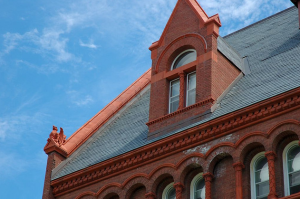 Photo by Tim Plante - from Flickr Creative CommonsTo conclude the series this week of posts about Building Campus Community, IIRP's newest project dealing with applying Restorative Practices in residential life departments at colleges and universities, I'll conclude with a short passage from Chapter 5, Responsive Restorative Circles, from the new book.
Photo by Tim Plante - from Flickr Creative CommonsTo conclude the series this week of posts about Building Campus Community, IIRP's newest project dealing with applying Restorative Practices in residential life departments at colleges and universities, I'll conclude with a short passage from Chapter 5, Responsive Restorative Circles, from the new book.
For more information about this project, visit the Building Campus Community web site. Note, too, that there will be webinars on this topic offered on February 23, March 19 and April 3.
Today's offering is, again, a sample from the Building Campus Community book. This passage is from Chapter 4, Proactive Community Circles:
Creative Ways to Engage Residents in Proactive Community Circles
While supervisors will most likely provide RAs with topic ideas and guidelines about how frequently to hold community circles with residents, experience shows that flexibility is really important, too. RAs who adapt circles to suit their personalities, their residents’ needs and attributes, the unique circumstances of each living situation and the common space available for meetings tend to have the best success.
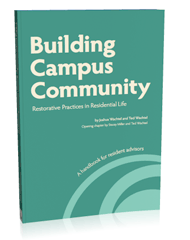 IIRP now has a brand new book, Building Campus Community: Restorative Practices in Residential Life. I co-wrote the book with Ted Wachtel, and the introductory chapter was co-written by Stacey Miller, University of Vermont Director of Residential Life, and Ted Wachtel.
IIRP now has a brand new book, Building Campus Community: Restorative Practices in Residential Life. I co-wrote the book with Ted Wachtel, and the introductory chapter was co-written by Stacey Miller, University of Vermont Director of Residential Life, and Ted Wachtel.
Here are a couple excepts from Chapter 3 discussing the special role of the RA and how Restorative Practices can help balance the ideals of being a community leader with the need to also enforce behavioral norms:
This week I'll be featuring different links related to IIRP's newest project, Building Campus Community. This project helps campuses apply the full spectrum of restorative practices at the college and university level, beginning specifically with residence halls. Restorative practices gives resident advisors (RA's) a wide range of tools for both building community proactively and responding to harm and wrongdoing when it occurs.
By way of introduction, here are two videos from administrators and RA's at the University of Vermont, a campus currently in its second year of RP implementation for residence halls across the entire campus.
